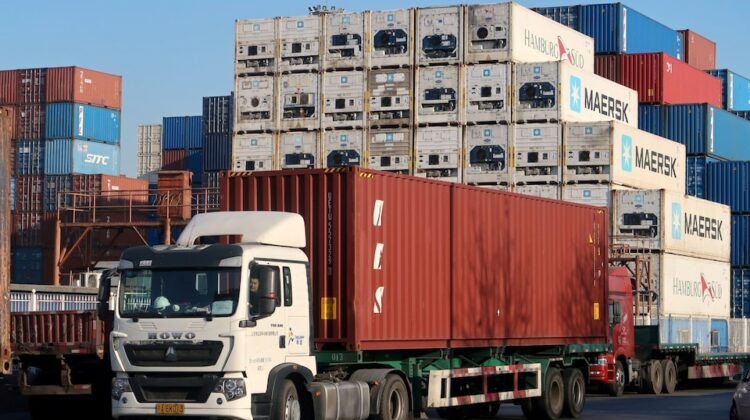
Shortages push Freight Rates to New High

LONDON : Global shipping costs have soared to record highs after an August price surge fuelled by the scramble by firms to combat severe supply shortages as port and factory shutdowns bite.
Trade experts warned the supply chain disruptions that threaten to stifle the post-Covid recovery will spill over into 2022 as freight rates soar.
Harper Petersen’s gauge tracking rates on container ships has jumped 8pc in August to a record high with the index more than tripling in 2021.
Meanwhile, the closely watched Baltic Dry Index (BDI) is up almost 30pc in August to the highest level since mid-2010. The BDI measures prices paid for transporting raw materials, such as metals and grains, across the world.
Supply chain disruptions have been driven by booming post-lockdown demand and disruptions to supply, such as closures of ports and factories in Asia due to Covid.
Shipping costs have exploded as a result of shortages and increased demand, with the biggest rises on rates out of Asia
UBS warned of a tenfold increase in container freight rates between China and the US and Europe compared to 2019 levels following the closure of the Chinese port of Ningbo, the world’s third busiest.
Its economist Edward Teather warned the disruption is “likely to last into 2022” and is the result of stimulus-boosted consumer demand and a shift in household spending to goods.
He said: “This unexpected jump in demand overwhelmed port capacity. In addition, Covid cases among crew have curtailed container ship capacity. The temporary Chinese port closures come on top of that.”
Economists have warned the shortages of products will hinder the recovery as rising shipping and material costs add to growing price pressures.
Kieran Tompkins, economist at Capital Economics, said “shortages are crimping manufacturing output”, threatening to weaken the UK’s rebound in GDP in the third quarter.
Manufacturers are suffering severe delays in deliveries from suppliers
It comes as owners of giant oil tankers swallow daily losses of thousands of dollars each as they bet on a surge in demand for crude as the global recovery takes off.
Data from VesselsValue shows that spot daily earnings on tanker charters are running at negative $3,281 (£2,394) per day because of low demand for oil and overcapacity in the tanker market.
Before coronavirus caused chaos, the average tanker charter rate was $33,000 per day, but crashing oil demand means this has plunged. Instead, owners are willing to accept losses – which are magnified by the $10,000 per day running costs for the vessels – in the hope of a resurgence once the pandemic abates.
Even mothballing ships until the rebound comes could prove more expensive than accepting money-losing charters losses, as the average daily cost to “idle” a Very Large Crude Carrier is $10,000, and the time taken to reactivate them means owners could lose out when the rebound comes.
Olivia Watkins, head cargo analyst at VesselsValue, said: “Idling ships is often a last resort as the cost of deactivation, demobilising crew, and then reactivation when the market improves is a costly exercise both in terms of time, logistics and overall expense.”
Source : The Telegraph, UK

